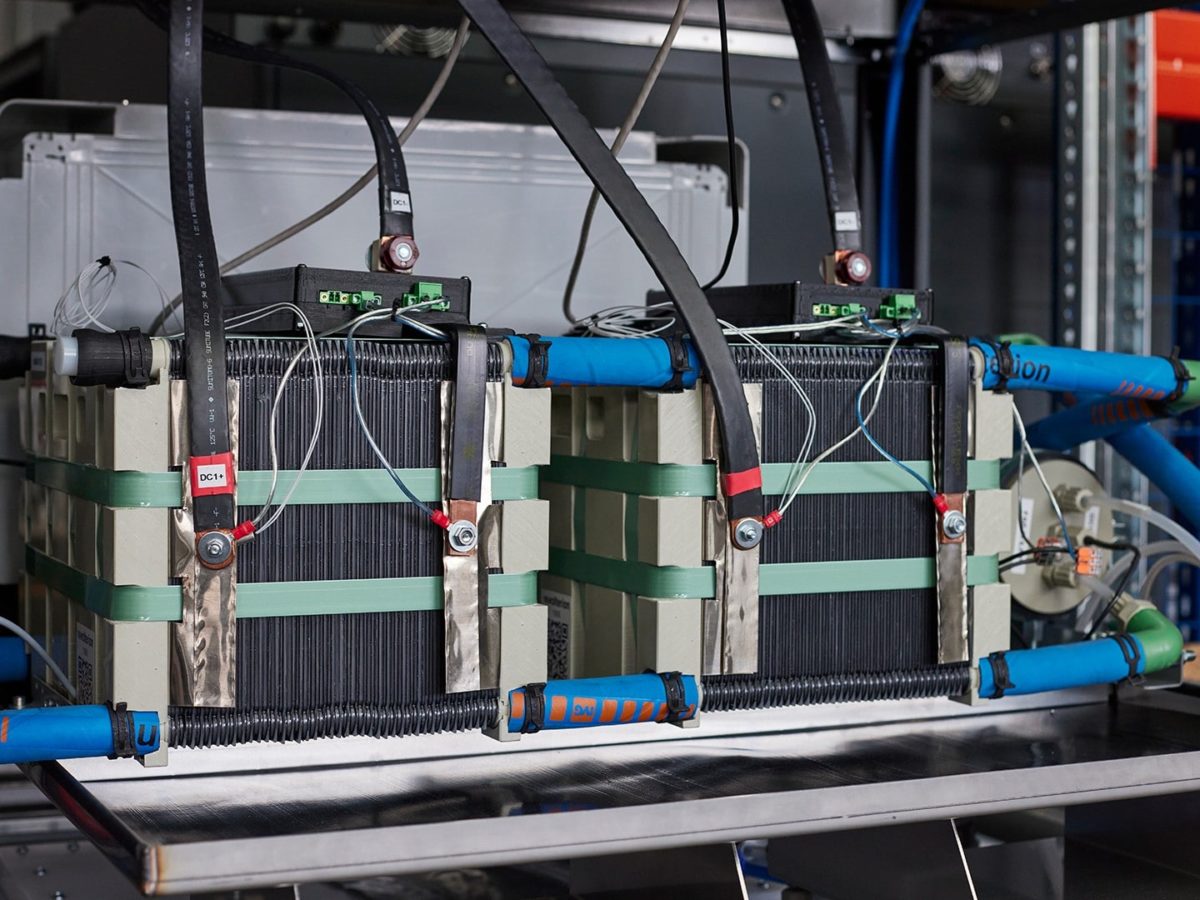From pv magazine Global
A group of scientists from the German research institute Fraunhofer Umsicht claims to have reduced the production costs of redox flow batteries by redesigning one of its main components – the stack.
The design of the stacks in redox flow batteries, on the other hand, is complicated by the presence of a number of parameters that can influence the performance. The German group said it developed the stack with an electrically conductive plastic so that it remains flexible and can be welded.
“The stack that has been developed, the heart of any redox flow battery, is 40% more cost-effective in terms of material costs,” said researcher Christian Doetsch, adding that it weighs 80% less than a conventional stack and is only about half the size. The device was fabricated with plastic in the form of pellets, which was then made into powder and mixed with 80% graphite at temperatures as low as minus 80 degrees Celsius.
The powder was then processed through a system comprising several rollers heated to different temperatures and working at different speeds. “The powder is briefly melted between the rollers at moderate temperatures and low pressures,” the scientists explained. “It is then kneaded, rolled into an ‘endless sheet’ and finally rolled up.”
The resulting flexible material is claimed to have thermoplastic properties and to be easy to weld. “The stack uses no gaskets whatsoever, and even screws are unnecessary — the cells are simply welded together,” the scientists stated. “Bipolar plates up to several square meters in size can be manufactured without problems.”
In a second step, which the research team described as crucial to further reduce production costs, the plates can be produced as an endless roll through a powder-to-roll process, which is said to require much less material. “Very thin plates can be produced in this way,” the researchers concluded. “In the injection moulding process, the plate thickness is limited to several millimetres due to the production method, but in the powder-to-roll process it can be between 0.1 and 0.4 millimetres.”
Fraunhofer Umsicht’s spin-off Volterion GmbH was also involved in the development of the new stack design and will be responsible for making it into a commercial solution.
This content is protected by copyright and may not be reused. If you want to cooperate with us and would like to reuse some of our content, please contact: editors@pv-magazine.com.









By submitting this form you agree to pv magazine using your data for the purposes of publishing your comment.
Your personal data will only be disclosed or otherwise transmitted to third parties for the purposes of spam filtering or if this is necessary for technical maintenance of the website. Any other transfer to third parties will not take place unless this is justified on the basis of applicable data protection regulations or if pv magazine is legally obliged to do so.
You may revoke this consent at any time with effect for the future, in which case your personal data will be deleted immediately. Otherwise, your data will be deleted if pv magazine has processed your request or the purpose of data storage is fulfilled.
Further information on data privacy can be found in our Data Protection Policy.